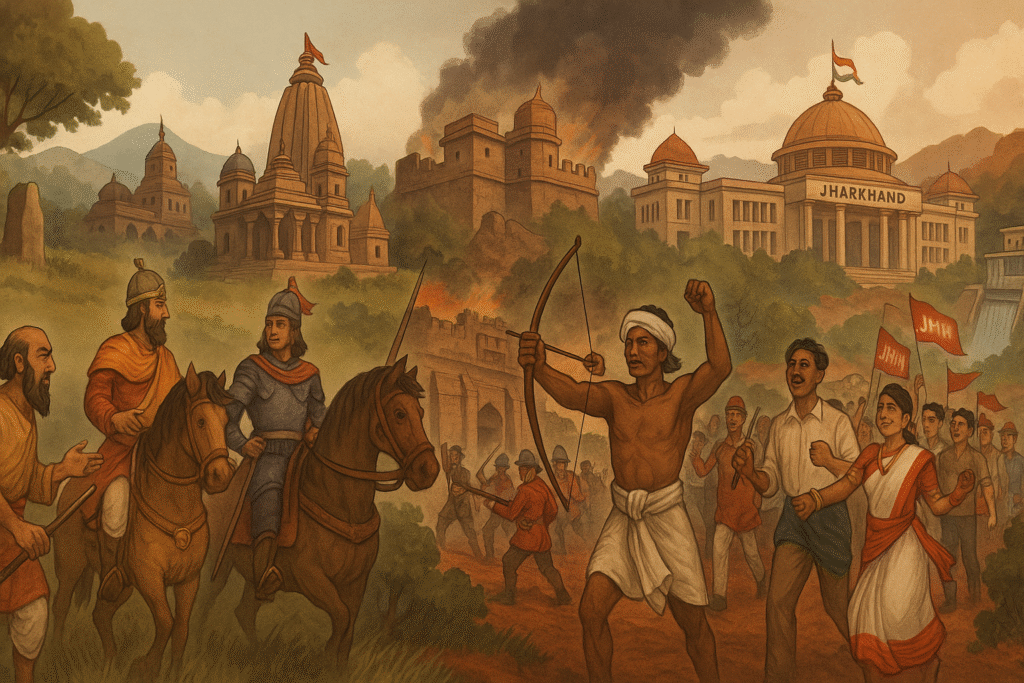
The eastern Indian province of Bengal witnessed intense military and political conflict in the 16th century. From Sher Shah Suri’s strategic conquests to Mughal emperor Akbar’s administrative reforms, this period laid the foundation for imperial dominance over eastern India.
Sher Shah’s Campaigns into Bengal
- Sher Shah Suri launched several military expeditions, aiming to annex Bengal into his growing empire.
- He chose an unconventional route to enter Bengal, bypassing guarded paths.
- His forces moved through the Mor and Dwarka Rivers, entering via Sherpur (Birbhum district).
- This route avoided Mughal patrols and offered tactical surprise.
Sher Shah’s Victory in Bengal
- Sher Shah’s son, Jalal Khan, captured the Teliagadhi Pass, a critical chokepoint controlling Bengal’s entry.
- Bengal’s ruler at the time, Sultan Mahmud Shah, was weak and politically isolated.
- Under pressure, Mahmud Shah ceded major territories to the Afghan forces.
Mughal-Sher Shah Rivalry (1538)
- Mughal Emperor Humayun attempted to regain Bengal in 1538, marching towards Teliagadhi Pass.
- Jalal Khan initially resisted, but later withdrew, allowing Humayun to enter Bengal.
- This victory was short-lived, and Sher Shah planned a counterattack.
Battle of Chausa (June 1539)
- Sher Shah Suri defeated Humayun at the Battle of Chausa in June 1539.
- This battle marked Sher Shah’s emergence as the dominant ruler in northern India.
- His empire now extended from Kanauj to Bengal, including Jharkhand, Ganges valley, and the Himalayan foothills.
Bengal under the Mughals Post–Sher Shah
- After Sher Shah’s death, the Mughals aimed to reclaim Bengal.
- Emperor Akbar began a series of campaigns to reassert control over the eastern provinces.
Dawood Karani’s Rebellion (1572–1575)
- Dawood Karani, after the death of his father Suleiman Karani in 1572, declared himself King of Bengal.
- His declaration of independence provoked Akbar, leading to Mughal intervention.
- In 1575, Munim Khan led Akbar’s forces to defeat Dawood Karani.
- Dawood was forced to flee, and Bengal was officially incorporated into the Mughal Empire.
Administrative Challenges (1575–1594)
- Despite the victory, Bengal, Bihar, and Odisha remained unstable.
- Internal revolts, Afghan resistance, and slow administrative reforms plagued the region.
- From 1575 to 1594, the Mughals faced continuous uprisings.
Appointment of Khan-e-Jahan & Administrative Reforms
- Following Munim Khan’s death in 1575, Hussein Kuli Khan (Khan-e-Jahan) was appointed Viceroy of Bengal.
- Todar Mal, Akbar’s finance minister, also played a key role in stabilization efforts.
- Despite their efforts, Afghan rebel groups continued to challenge Mughal authority.
Junaid Karani’s Role in Jharkhand
- Junaid Karani, cousin of Dawood, tried to establish a stronghold in Jharkhand and southern Bihar.
- He encountered tough resistance from Mughal generals like Khan-e-Jahan and Todar Mal.
- Eventually, Junaid was forced to retreat, marking the decline of Afghan resistance in central-eastern India.
Battle of Kala Pahad (1583)
- In 1582, Akbar sent Khan-e-Azam to decisively end Afghan defiance.
- A series of engagements led to the Battle of Kala Pahad (1583).
- The Mughals emerged victorious, ensuring firm control over Bengal.
Rajmahal Becomes Capital (1592)
- In 1592, the Mughal administration shifted the Bengal capital to Rajmahal.
- The location had earlier been chosen by Sher Shah Suri for its strategic significance.
- Under Raja Man Singh, Rajmahal was developed and fortified further.
- This move marked a new era of Mughal governance in Bengal.
Capital Shifts Influenced by the Ganges River
- Earlier capitals of Bengal included Gaur, Pundua, and Tanda.
- The changing course of the Ganges River played a role in shifting capitals.
- Rajmahal’s location offered better river access and defense.
Mughal Reforms Under Akbar
- By 1594, the Mughal Empire had strengthened its hold on Bengal.
- Akbar focused on revenue reforms, military stationing, and central administration.
- Despite gains, sporadic rebellions continued, reflecting the region’s complex political fabric.
Summary of Key Events
- Sher Shah Suri’s Bengal invasion used a less-traveled route via Mor and Dwarka rivers.
- Teliagadhi Pass, captured by Jalal Khan, was vital to Afghan success.
- Humayun’s temporary control in 1538 was overturned by Sher Shah’s victory at Chausa.
- Akbar’s campaigns (1572–1594) brought Bengal back into Mughal hands.
- Dawood and Junaid Karani’s revolts were ultimately defeated.
- Battle of Kala Pahad (1583) ended major Afghan resistance.
- Rajmahal (1592) became the Mughal capital, replacing Gaur and Tanda.
- Mughal administrative reforms were enforced despite ongoing internal resistance.

One thought on “Mughal Rulers and Bengal”